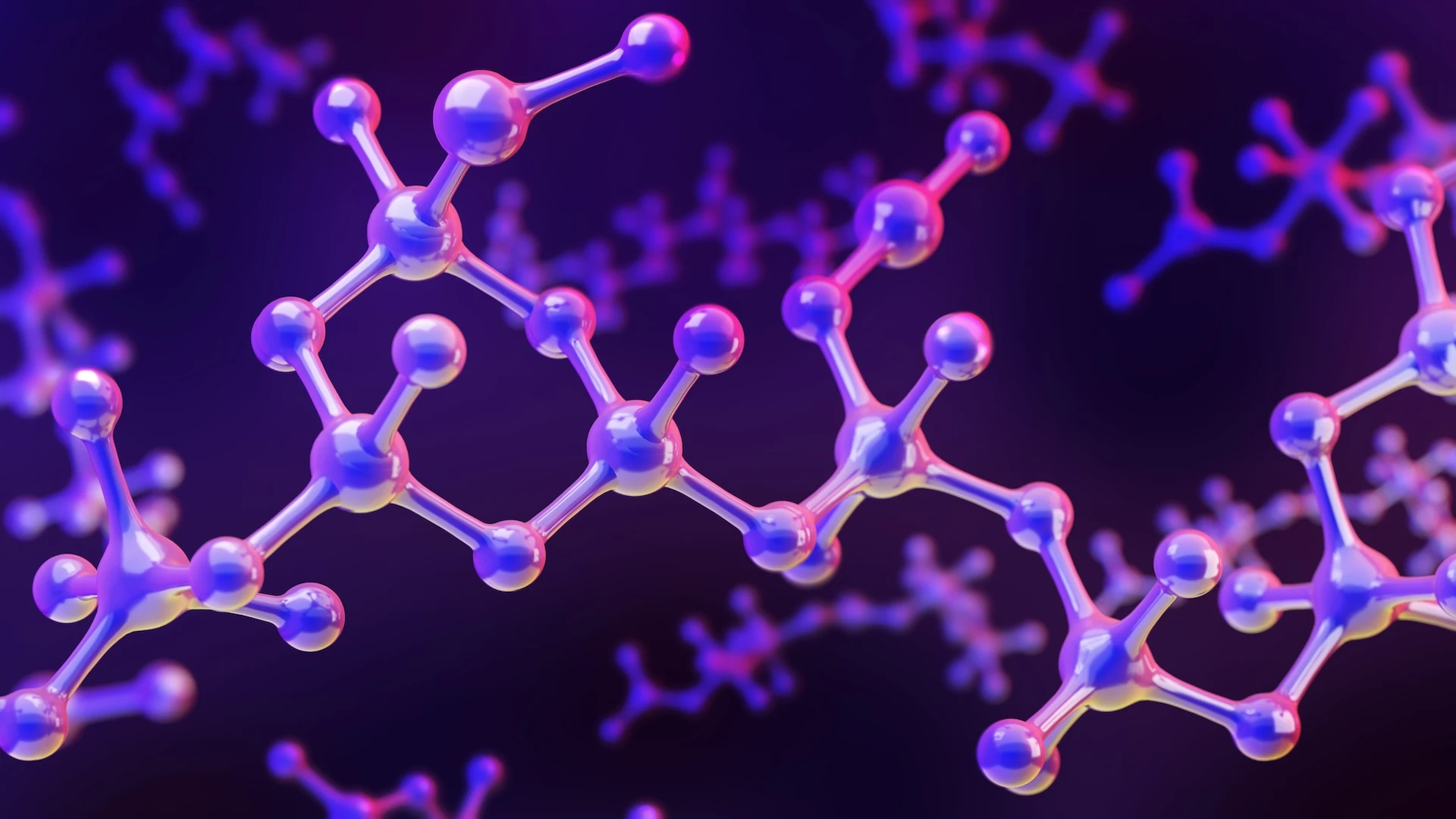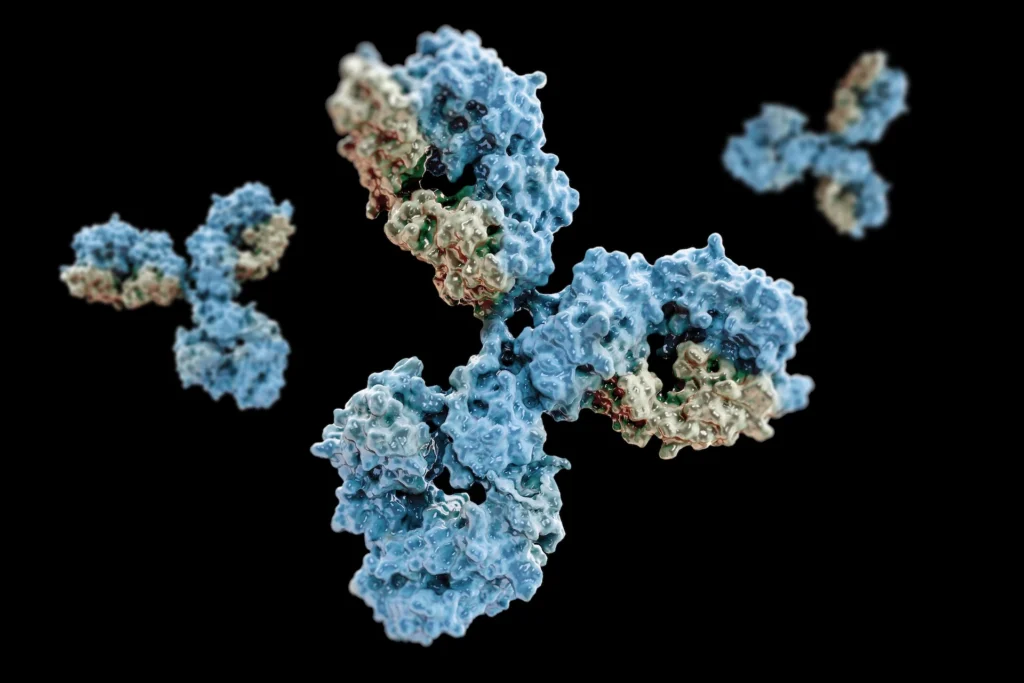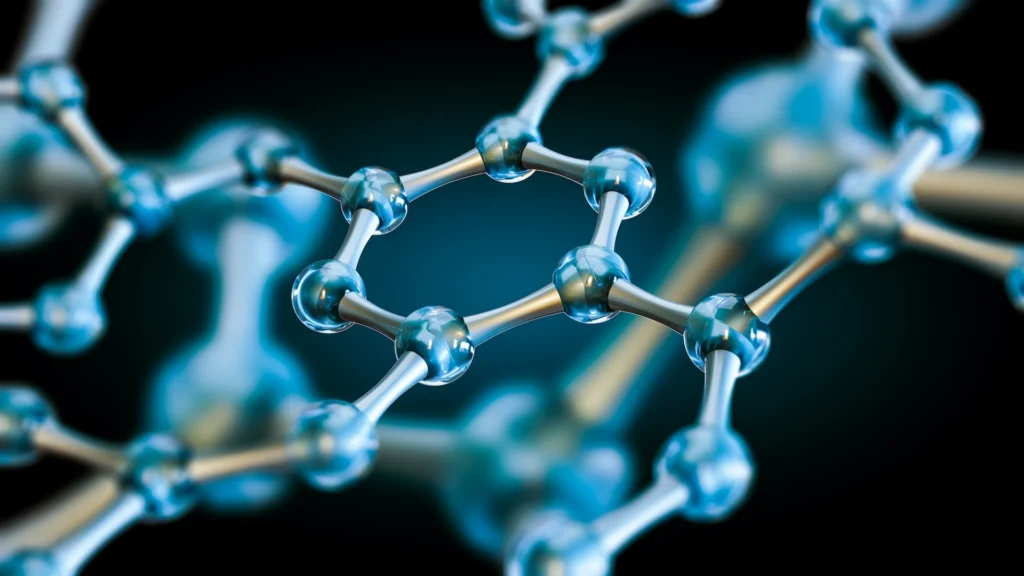We uses the Restricted Orientation Anisotropy Method (ROAM)—an ultrafast IR approach—to probe free volume elements (FVEs) in PS and PMMA via the restricted reorientation of an embedded vibrational probe. It extracts FVE sizes, distributions, ~150 ps dynamics, and local electrostatic fields, finding larger, broader FVEs in PS than in PMMA. Using the vibrational Stark effect, the authors correlate FVE radius with field strength, revealing polymer-specific trends (notably for small FVEs). We also refine the size-distribution method and benchmark ROAM against PALS and gas permeation data.
Background
Free volume elements (FVEs) govern how molecules move inside polymers, shaping diffusion, gas barrier performance, and mechanical response. Traditional bulk measurements capture only averages and miss the size distribution, reconfiguration dynamics, and local electrostatic fields that control these behaviors. To truly link molecular structure to macroscopic properties, we need tools that resolve FVEs in situ.
- What bulk tests miss: Which FVE sizes exist, how broadly they’re distributed, and how fast they rearrange (sub-nanosecond scales).
- Hidden influencers: Local electrostatic fields that modulate probe dynamics and sorbate partitioning.
- Why it matters: Without molecular-level FVE data, structure–property relationships stay ambiguous, slowing design and optimization.
- What’s needed: Methods that directly quantify FVE size distributions, ultrafast dynamics, and local fields inside working polymers.
Challenge
To link polymer microstructure to transport, the team needed molecular-level readouts that bulk tests can’t provide. Specifically, they set out to:
- Resolve FVE size and distributions in PS and PMMA
- Identify not just average free volume, but the full spread of cavity radii and how polymer chemistry (PS vs. PMMA) shifts those populations.
- Quantify ultrafast structural dynamics
- Measure how FVEs reconfigure on sub-nanosecond timescales (creation, collapse, and shape fluctuations) that govern diffusion and barrier performance.
- Map local electrostatics to structure
- Correlate local electric field strengths—which influence probe frequencies and sorbate partitioning—directly with FVE size and topology.
These granular parameters are not accessible from bulk averages alone, motivating techniques that can capture size distributions, ultrafast dynamics, and local fields in situ.
Approach: Molecular Simulation + Infrared Spectroscopy
Ultrafast Infrared Spectroscopy (ROAM)
- Employed the Restricted Orientation Anisotropy Method to read out FVEs via the restricted reorientation of embedded vibrational probes.
- Quantified structure: Determined that PS hosts larger FVEs with broader size distributions than PMMA.
- Captured dynamics: Resolved ~150 ps reconfiguration times in both polymers, linking sub-ns motions to macroscopic transport.
Molecular Simulation for Deeper Insight
- Atomistic visualization: MD reveals cavity geometry, lifetimes, and rearrangement pathways that underlie ROAM signals.
- Cross-validation: Simulated time-correlation functions and residence times confirm the experimental ~150 ps timescale and expose rare events beyond spectroscopic reach.
- Field–structure mapping: By computing local electric fields along MD trajectories, simulations reproduce vibrational Stark correlations and offer a molecule-by-molecule mechanism connecting FVE size to electrostatic environment.
Closed loop: Insights from MD refine spectral models, while ROAM constrains simulation parameters—together delivering a self-consistent picture of FVE size, distribution, dynamics, and local fields.
Key Findings
- PS vs. PMMA free volume
- Polystyrene (PS) hosts larger FVEs with a broader size distribution than PMMA, indicating a more heterogeneous glassy microstructure that can impact diffusion and barrier properties.
- Dynamic timescales
- Both polymers exhibit sub-nanosecond FVE rearrangements (~150 ps), revealing rapid local reconfiguration that governs short-time transport and mechanical response.
- Electrostatic mapping
- A polymer-specific link exists between FVE radius and local electric field strength; the size–field trend differs in PS vs. PMMA, especially for smaller FVEs, highlighting chemistry-dependent packing and polarity.
- Cross-method validation
- ROAM-derived sizes and dynamics are consistent with PALS and gas permeation measurements, strengthening confidence in the structural and kinetic picture provided.
Impact
For polymer science
Pairing ultrafast IR spectroscopy (ROAM) with atomistic simulation offers a high-resolution lens on free volume—resolving size distributions, sub-ns dynamics, and local fields that bulk tests average out. This integrated toolkit turns hidden microstructure into measurable, comparable parameters across chemistries and processing conditions.
For materials design
Quantitative links between FVE size/dynamics and transport properties enable targeted tuning of polymers for barrier films, membranes, and protective coatings. Engineers can rationally adjust chemistry, additives, and processing to hit permeability and durability specs with fewer trial-and-error cycles.
For the simulation community
The study shows how MD and field calculations can validate and amplify spectroscopy—explaining signals molecule-by-molecule and feeding predictive structure–property models. This closes the loop from microscopic mechanisms to macroscopic performance forecasts, accelerating virtual screening and design.
Why It Matters
Elevating **molecular simulation** alongside **ultrafast spectroscopy** lets researchers truly **bridge theory and experiment**, converting hidden, Å–fs-scale events into measurable, actionable parameters. This integrated view clarifies the full chain—**molecular structure → free-volume size/distribution → sub-ns dynamics → macroscopic transport and mechanics**—so models become predictive, experiments become interpretable, and design choices (chemistry, additives, processing) become targeted rather than trial-and-error. The payoff is faster iteration and more reliable performance in real-world polymer films, membranes, and coatings.
👉 Takeaway: Molecular simulation is not just an optional add-on – it is an essential driver for advancing polymer science, enabling more accurate interpretation of experiments and accelerating the design of next-generation materials.
Reference
Free Volume Element Sizes and Dynamics in Polystyrene and Poly(methyl methacrylate) Measured with Ultrafast Infrared
Spectroscopy.
Sebastian M. Fica-Contreras, David J. Hoffman, Junkun Pan, Chungwen Liang, and Michael Fayer. J. Am. Chem. Soc. 143:3583–3594 (2021)




